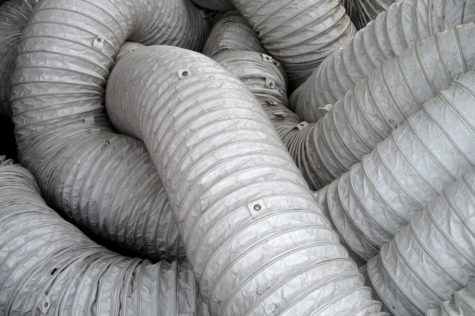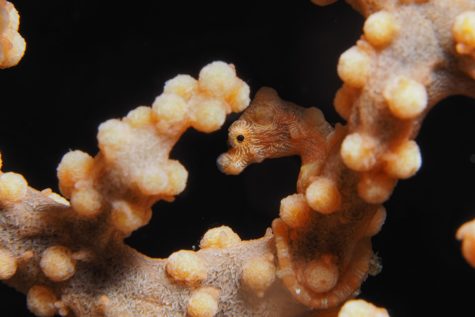
I warned you. Well, I warned someone…probably one of my fellow LWONers…that if nobody suggested a compelling way to fill this space for today, I’d write about lugworms.
Time’s up!
I’ve actually been thinking a lot about lugworms of late because of a recent diving experience in Ria Formosa, a sandy-bottom coastal lagoon in the Algarve of Portugal. I was there searching for seahorses (a perfectly fine subject for this essay…why not seahorses?? Look how lovable!) and I repeatedly noticed these walnut-size grayish mucus balls flopping around among the rocks. The current was kicking them hard, but they were clearly built to take it; some held tight, balloons tied to a fence on a windy day. Others detached and rolled through the sand and seagrass like tumbleweeds. Tumbleweeds made of mucus.
What were they? I wanted to know. So, I asked the seahorse scientist Miguel Correia, of the Center for Ocean Studies at the University of the Algarve, who had escorted me on the seahorse dives (and probably also wondered why I wasn’t writing about seahorses for this essay).
I was delighted with his answer: Lugworm egg sacs.
Unless you are a fisherman in the UK, you probably know nothing of lugworms. Neither did I, but that’s all changed now.
Lugworms are burrowing annelid (segmented) worms, lovers of sand, mud, sediment, and detritus at the water’s edge. They’re a coastal European animal, best known as bait by those who have experienced them—fishermen and the flatfish and birds that gag them down in situ. The sometimes-foot-long creatures bioturbate (oxygenate) the sand with their tunneling behavior, a true ecosystem service! (The behavior also creates a cast up on the beach that looks like an impressive pile of doo doo.) A fluid-filled organ in one end of the lugworm tells it down from up, letting it orient properly for burrowing and feeding. That’s pretty cool.
The egg sacs have a certain amount of character, in a wiggling-Jello sort of way, but lugworm love is generally disappointing: There’s no direct contact; just male worm and female worm each doing its individual thing, in private. Males are “broadcast spawners,” which sounds messy because it is—ejaculation happens, at low tide, in multiple bursts through six different pairs of body ducts at the same time, creating “sperm puddles” in the sand. (You’re welcome.)
Females, meanwhile, drop a pile of eggs, encased in a tongue-shaped mucus case, into their beach she-burrow, magically around the same time as the male’s antics. Finally, the tide comes. (See what I did there?). The sperm start swimming, wash into the burrow, and everything gets mixed together underground. Fertilization happens.
After developing a while in mom’s house, the larvae surface in those delightful mucus bubbles—which attach to substrate at first but eventually free-fly in the shallow sea until they settle down in a new home. Hatchlings burrow in and life starts anew.
In 2016 the good citizens around Newcastle, UK were asked to be extra-good citizens and, as they strolled the beaches, look for sperm puddles for a study of lugworm reproduction. Which means someone actually has a grant to research lugworms.
No doubt there’s more to say about the life history of lugworms, but I wouldn’t want to overwhelm you with new information. Perhaps I’ve said too much already.
I’m a love-all-creatures kind of gal. But annelids, unlike that adorable seahorse over there, are a tough sell. The lugworm is also known as the blow lug. Which isn’t helping its likability.
Although there is this: Apparently the oxygen-rich blood of the lugworm is of interest to modern medicine. Read about that here.
Maybe this also helps a titch: William Butler Yeats mentioned a singing lugworm in a poem:
But while he passed before a plashy place,
A lug-worm with its gray and muddy mouth
Sang how somewhere to north or west or south
There dwelt a gay, exulting, gentle race;
And how beneath those three-times blessed skies
A Danaan fruitage makes a shower of moons,
And as it falls awakens leafy tunes:
And at that singing he was no more wise.
Scientific and literary value aside, I felt nothing but cold disgust as I watched this video of fishermen “pumping” for lugworms (called black lugs here). It appears that, if you sunbathe along the UK coast (why would you?), there is a beach-size horizontal worm layer (think sand-worm tiramisu) less than a foot below your towel. (Lugworms actually do make up almost a third of the biomass of an average beach in their range, so the tiramisu metaphor isn’t far off.) If you fear to click, just know that the fishermen, jamming their digging tubes into the sand, slurp up and spit out one of these horrid flaccid things Every. Single. Time.
Lugworms!
Top photo: Martin Visser
Cutest Seahorse in the World: Pascal Van de Vendel
This reminds me of the RadioLab episode called “Yellow Fluff and Other Curious Encounters”. Even gross-sounding things can be magical.
https://www.wnycstudios.org/story/91672-yellow-fluff-and-other-curious-encounters
This whole piece has blown my mind, that tiramisu imagery had me gagging and the whole sperm puddle thing didn’t help either. But, seriously what a fascinating collection of weirdness, thank you for compiling it.